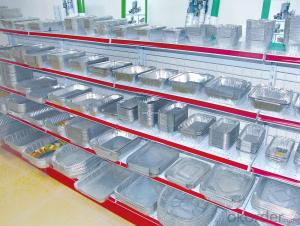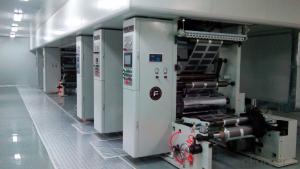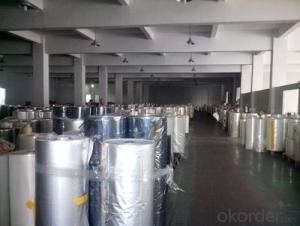Aluminium Coil with Different Colors and Applications
- Loading Port:
- Shanghai
- Payment Terms:
- TT OR LC
- Min Order Qty:
- 5 m.t.
- Supply Capability:
- 1000 m.t./month
OKorder Service Pledge
OKorder Financial Service
You Might Also Like
Item specifice
Structure of Aluminium Coil with Different Colors and Applications Description:
Coated aluminum coil/sheet are of a wide range of colors, which gives wonderful appearance no matter in residential and commercial constructions of great exhibition centers.
The coated aluminum coil/sheet have been widely used in the fields of construction and decoration( garage doors, ceiling etc.), electronic appliances, lighting decoration, air-condition air pipes, sandwich panels and drainages etc.
Main Features of the Aluminium Coil with Different Colors and Applications:
1) High flexibility
2) Impact resistance
3) Excellent weather-proof durability
4) Anti-ultraviolet
5) High erosion resist
Images of the Aluminium Coil with Different Colors and Applications:
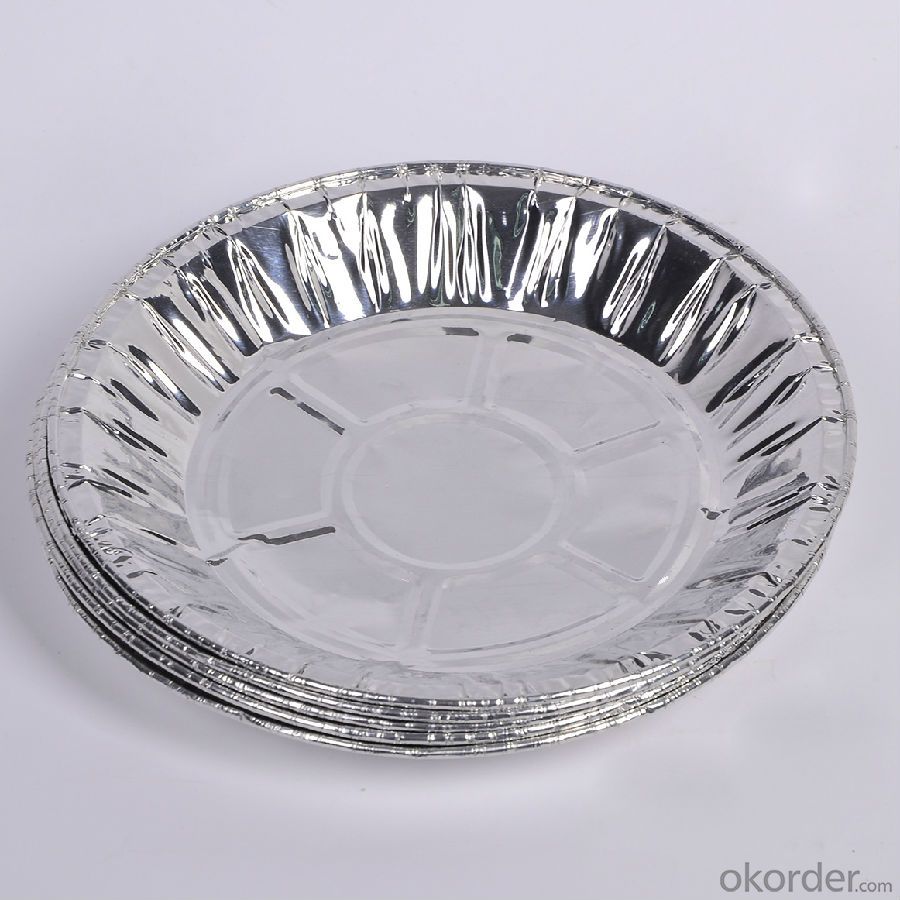
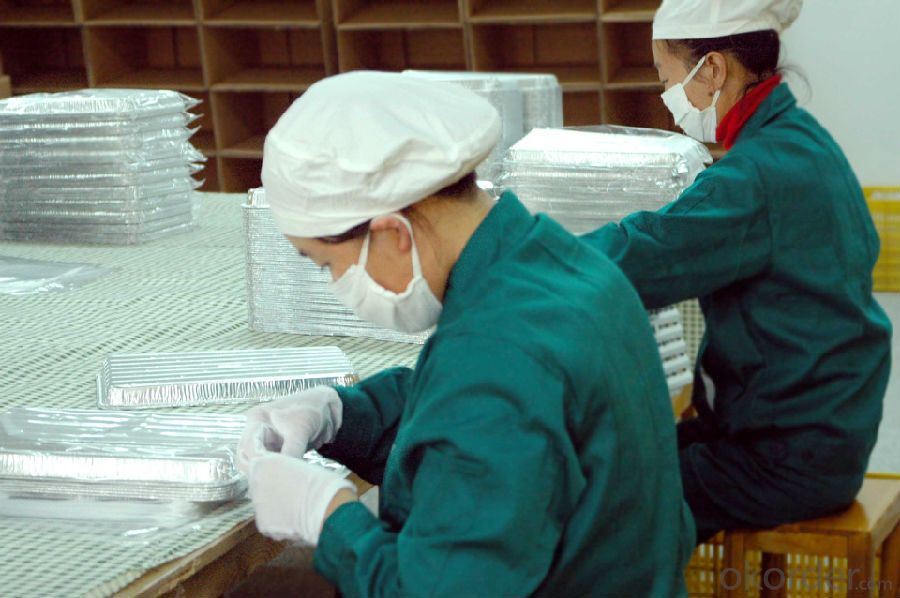

Aluminium Coil with Different Colors and Applications Specification:
Alloy | A1100,A3003,A1050,A8011 etc |
Temper | H16,H18,H24 |
Thickness | From 0.024mm to 1.2mm |
Width | Standard width:1240mm |
Special width:1300mm,1520mm,1570mm,1595mm | |
Diameter | Standard dia:1200mm |
Interior dia:150mm,405mm,505mm | |
Weight | 2.5 T/coil,3.0 T/coil |
Coating | PE, PVDF, AC |
Surface | Embossed, mill finish, coated |
Color | AS to code RAL |
Gloss | 10-90%(EN ISO-2813:1994) |
Coating Thickness | PE: more than 18 micron |
PVDF: more than 25 micron | |
Coating Hardness (pencil resistance) | More than 2h |
Coating adhesion | 5J(EN ISO-2409:1994) |
Impact Resistance | No peeling or cracking(50 kg/cm,ASTMD-2794:1993) |
Flexibility (T-bend) | 2T |
MEK resistance | More than 100 |
FAQ:
a.What is monthly capacity
---CNBM is one stated own company and our monthly capacity is about 2000tons.
b. Now which countries do you export your goods?
---Now we export to South East Asia,Africa, North America,South America ect.
- Q:Can aluminum sheets be painted or coated?
- Yes, aluminum sheets can be painted or coated. Aluminum surfaces can be prepared and primed before applying paint or a protective coating. The paint or coating adheres well to the aluminum surface, providing a durable and aesthetically pleasing finish.
- Q:How does the surface roughness affect the friction properties of aluminum sheet?
- The friction properties of an aluminum sheet are significantly affected by its surface roughness. When the surface is rough, there are more microscopic peaks and valleys, which can enhance the frictional forces between the sheet and the contacting surfaces. Generally, an increase in surface roughness results in a higher friction coefficient. This occurs because the roughness increases the effective contact area between the aluminum sheet and the opposing surface, leading to more interlocking and adhesion between the two surfaces. Consequently, the resistance to relative motion, or friction, is heightened. Moreover, a rough surface can trap lubricants or contaminants, reducing lubrication efficiency and increasing friction. The roughness of the aluminum sheet also influences the formation and retention of a lubricating film, further impacting the friction properties. It is important to acknowledge that the type of roughness, such as its amplitude, wavelength, and orientation, can also affect the friction properties. For instance, certain surface textures, like grooves or patterns, may facilitate lubricant retention and reduce friction, even with increased roughness. In summary, the friction properties of an aluminum sheet are significantly determined by its surface roughness. A rough surface increases the contact area and adhesion between the sheet and opposing surface, resulting in higher friction coefficients. However, the specific characteristics of the roughness and the presence of lubricants or contaminants can further influence the friction behavior.
- Q:Are aluminum sheets suitable for aerospace wing structures?
- Yes, aluminum sheets are often used in aerospace wing structures due to their lightweight nature, high strength-to-weight ratio, and excellent corrosion resistance.
- Q:i know the 4100 is aluminum........im wondering if this one is also..
- Yes, the whole thing is aluminum
- Q:why does the bubble apear a few minutes later after putting aluminum sheet into diluted hydrochloric acid?
- Aluminum element is extremely activated and will react with oxygen, generating aluminum oxide, once being exposed in air, so there is a layer of aluminum oxide on the surface of daily aluminum products including aluminum sheet. When aluminum sheet is put into diluted hydrochloric acid, aluminum oxide on the surface will firstly react with hydrochloric acid, generating aluminium chloride and water, the process won’t generate bubble, but after finishing the reaction of aluminum oxide on the surface, when the exposed aluminum element reacts with hydrochloric acid, generating aluminium chloride and oxygen, the bubble appears.
- Q:As for cast aluminum sheet or wrought one, which one has faster heat conduction?
- 1,duralumin: it's the alloy of aluminum, copper, magnesium, manganese and other metals. it's suitable for compacting by rolling, and it has a higher strength and hardness than common aluminum products. 2, aluminum: it contains many inpurities, is crisp and easy to be smashed.cast aluminum usually is secondary aluminum, and it is produced by remelting the collected old aluminum pots and spoons.3, wrought aluminum: it contains 98% aluminum and 2% or more inpurities, and is comparatively pure aluminum. its soft priority makes it suitable for being pressed into various shapes, aluminum pots,aluminum lunch box,aluminum sheets,aluminum wires,aluminum pipes are all made by wrought aluminum.you will know their defferences from their definition.
- Q:Can aluminum sheets be used for reflective purposes?
- Yes, aluminum sheets can be used for reflective purposes due to their high reflectivity and low absorption of light.
- Q:Are 101 aluminum sheets suitable for aircraft manufacturing?
- Yes, 101 aluminum sheets are suitable for aircraft manufacturing.
- Q:Are aluminum sheets suitable for signage?
- Yes, aluminum sheets are suitable for signage. They are lightweight, durable, and weather-resistant, making them a popular choice for outdoor and indoor signage applications. Additionally, aluminum sheets can be easily customized, printed, and mounted, allowing for versatile and long-lasting signage solutions.
- Q:What are the common thicknesses of aluminum sheets used in aerospace applications?
- Aluminum sheets are commonly utilized in aerospace applications because of their lightweight and high strength properties. The thickness of these sheets can vary based on the specific needs of the fabricated component or structure. Aluminum sheets in aerospace applications typically have thicknesses ranging from 0.016 inches (0.4 mm) to 0.25 inches (6.35 mm). These thicknesses are chosen considering factors such as the desired strength-to-weight ratio, structural integrity, and the specific application or component being manufactured. Thinner aluminum sheets, with a thickness of 0.016 to 0.040 inches, are frequently used for lightweight structures, interior components, and non-critical parts. These thin sheets provide the necessary strength while keeping weight at a minimum. Thicker aluminum sheets are employed for more structural components. Typically, thicknesses between 0.040 and 0.125 inches are utilized for structural elements like floor panels, bulkheads, and wing ribs. These sheets offer enhanced strength and rigidity to support the aircraft's weight and handle the stresses experienced during flight. In certain cases, even thicker aluminum sheets ranging from 0.125 to 0.25 inches may be employed for heavy-duty structural components or areas requiring additional strength. These thicker sheets are used for critical parts like landing gear components, wing spars, and engine mounts to ensure the necessary structural integrity and load-bearing capability. It is important to note that these thickness ranges are general and may vary depending on the aircraft type, design specifications, and the specific application within the aerospace industry.
1. Manufacturer Overview |
|
|---|---|
| Location | |
| Year Established | |
| Annual Output Value | |
| Main Markets | |
| Company Certifications | |
2. Manufacturer Certificates |
|
|---|---|
| a) Certification Name | |
| Range | |
| Reference | |
| Validity Period | |
3. Manufacturer Capability |
|
|---|---|
| a)Trade Capacity | |
| Nearest Port | |
| Export Percentage | |
| No.of Employees in Trade Department | |
| Language Spoken: | |
| b)Factory Information | |
| Factory Size: | |
| No. of Production Lines | |
| Contract Manufacturing | |
| Product Price Range | |
Send your message to us
Aluminium Coil with Different Colors and Applications
- Loading Port:
- Shanghai
- Payment Terms:
- TT OR LC
- Min Order Qty:
- 5 m.t.
- Supply Capability:
- 1000 m.t./month
OKorder Service Pledge
OKorder Financial Service
Similar products
New products
Hot products
Related keywords
